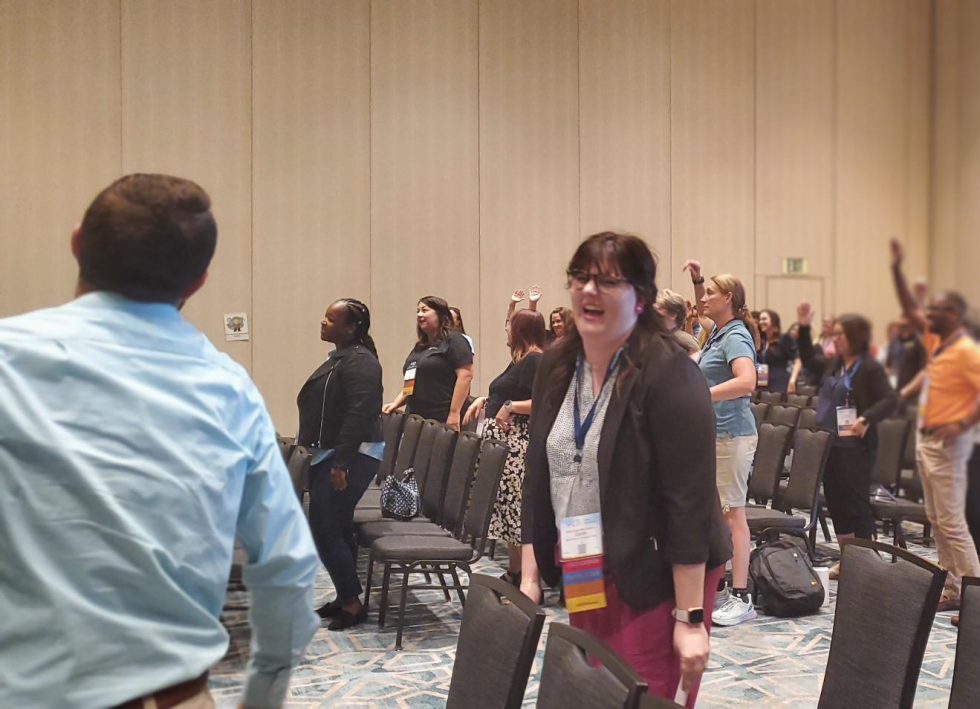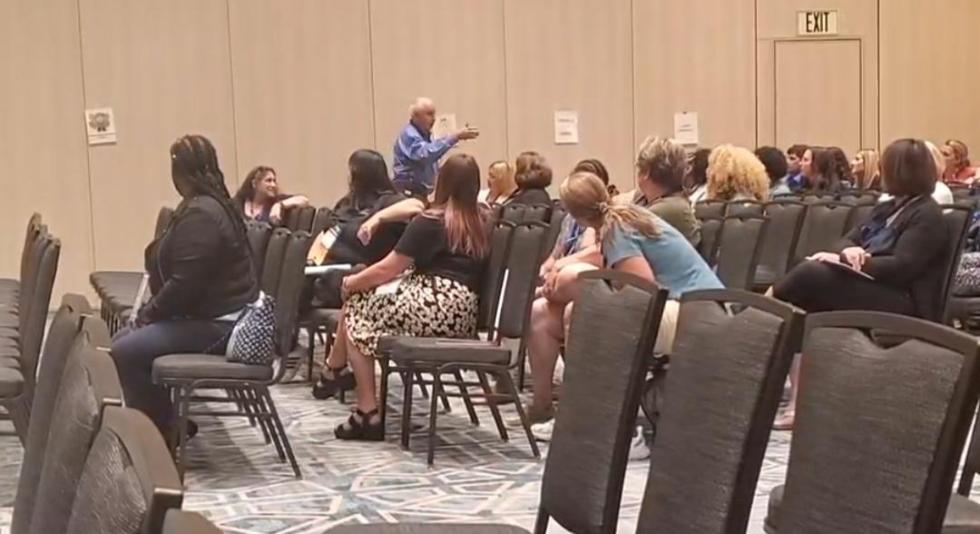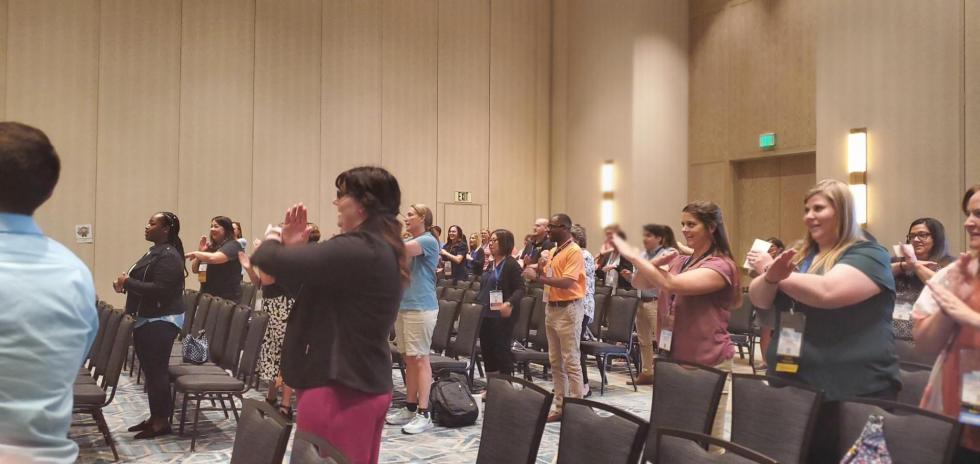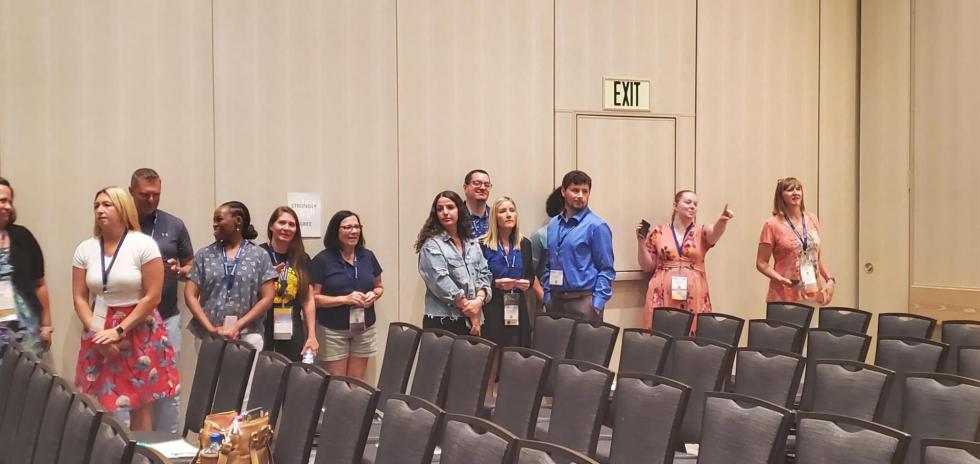Learning in Motion: 10 Activities to Get Your Students up and Moving With the Lesson
Prefer to listen? Check out the audio recording of this post instead.
Here is a challenge for you: Sit still for the next six hours while different people talk at you about things that you may or may not be interested in. Now, try that five days a week for 36 weeks.
Sound fun?
Yeah. Not for your students either.
This was the topic of Dave Shepard’s 2023 Making Schools Work Conference session, “Talk, Move and Mess: Activities to Help Engage Reluctant Learners.”
In it, he presented 35 different activities to get your students up and moving as they learn. This wasn’t a static lesson, though. Dave was quick to practice what he preached, and he had us up and moving throughout the whole session.
Encouraging students to engage with the learning, even when they don’t want to, will help the lessons stick.
So, what can you do to get your students to interact with your lessons? Here are some of my favorite ideas that Dave gave us, ranging from roll call activities to tickets out of class.
(For more ideas, check out our post on 7 Tools and Activities You Can Use to Keep Your Class Engaged.)
Pre- and Start-of-Class Activities
Making your class interactive starts from the very beginning of class. In fact, it can start before students even enter the door. Here are a couple of ways to start engaging students with the lesson before it even begins.
Idea 1: Pre-Class Agenda
Before students walk into the classroom, make writing the agenda on the board (or putting it on the screen) a priority. Being able to come into the class and see what they will be doing that day can help prepare them for the lesson.
It also helps them focus on it to have the class read the agenda out loud.
Idea 2: Turn and Talks
This is an activity you can do at any time, but it’s a good way to have students refresh each other about what they learned the day before, so I am putting it in the pre-class/beginning stages portions of this post.
Give students a discussion question or have them talk about what they learned in the last class. Then, have them pair up and talk one-on-one about whatever you have assigned.
A similar activity is to number people as ones and twos and have the ones teach the twos something and then swap and have the twos teach the ones something.
The good thing about this activity is that you can do it for any subject at any grade level.
Idea 3: Roll Call
This is one of the activities that we did in the actual session, and it was a lot of fun. You already don’t have a lot of time with your students, and you don’t want to waste any of it, so why not use every minute of what you have, including taking roll!
Dave pointed out that schools need attendance taken because attendance, more than actual learning, leads to funding. So, why not take that required time back and use it as a learning/icebreaker moment anyway?
In this game, you start by asking a question with a ton of different possible answers and ask the class to name the answer you are thinking about.
In our session, the question was “Which president am I thinking about right now?”
However, you can pick one that better fits your class and what you are learning:
- Name the vocabulary word I’m thinking about
- Which periodic table element is on my mind right now?
- Can you figure out my favorite math equation?
If you just want to get your students talking and participating, you might just do a general question:
- Name the basketball player I’m thinking about.
- What type of ice cream should I have today?
- What’s a good book to read for fun?
Once you have a question and answer in mind, start taking roll. As you call on each student, have them respond with an answer instead of the generic “here” or “present.”
The first student to get it right wins something that you’ve mentioned ahead of time. Here are some ideas from the session:
- Extra credit
- A free homework pass
- An “I won’t call your mama about [fill in the blank]” promise
Here is an example of how it could go, shamelessly using my own nieces as the names for the students in the class, and going with the original question about which president I am thinking about now:
“Layla?”
“George Washington.”
“Good guess, but not the one I’ve written down here. Aaliyah?”
“Theodore Roosevelt?”
“Great president! Not who I have written down, though. Minka?”
“Lincoln?”
“Our tallest president! But not the one on this list. Talia?”
“Taft?”
“That’s it! You’ll get the extra credit today!”
You can do it like this where you announce the results as you go. In this case, you would need backup questions in case someone gets it early. You could also save the results until the end and then say who, if anyone, won. However, if you go that route, you might still want to only allow one student per answer so that you can challenge the class’s knowledge on a topic.
You might also want to mix up the roll call order so that the same students don’t always end up getting to go in the easier early spots.
Mid-Class Activities
Starting your class strong with some interactivity is great, but if they are still stuck in their seats throughout the heart of the class, you’ll lose that energy you created at the beginning.
That’s where the next group of ideas comes into the picture.
Idea 4: Matching Cards
Give every student a card with something on it that matches something on another card. For example, here are some ideas:
- One card might have a math problem on it, and they need to find the card with the solution.
- One card could have a vocabulary word and the other a definition.
- One card might have a chemical equation on it and its match could be the common name it’s called.
Idea 5: Sequencing
This is another card-based game. Give everyone a card with a fact of some sort written on it and have them line up in a certain order. Here are examples:
- Each card has a historical event on it, and the students line up in chronological order.
- Each card has a number or equation on it, and students line up from lowest to highest. (See our video on using a human number line to get more of an idea of how this could work.)
- Each card has a plot point from the novel you are studying, and they line up in the order the events happened in the story.
Idea 6: Total Physical Response
Here is another one we got to try out in the session: dancing. Dave sang songs about different school subjects, which he had us sing along while we stood and danced.
Don’t think this is just for young grades, either, because we were all adults having a lot of fun being childlike for a minute.
If you teach older grades, your students might roll their eyes, but then again, they might end up having just as much fun as we did!
Idea 7: Group Test Taking
Have students take a practice test…in groups!
Idea 8: Four Corners
This is another one we did in the session: four corners.
Before class begins, have some discussion topics ready that have agreement statements that match. (Edgar Allan Poe is the greatest writer of all time: strongly agree, agree, disagree, strongly disagree, etc.)
Put the agreement statements in each corner of the room. During class, have students go to the corner that matches their feelings on the topic. Let them talk with their group and figure out their argument for why they feel that way then share it with the class.
End of Class Activities
Your whole class has been interactive, so why let it sputter out at the end? Here are a couple of ideas on how to end strong.
Idea 9: What Did You Learn?
Reflection is a key part of learning, so a good way to end class is to have students sit down and sum up what they learned.
Idea 10: Ticket Out of Class
In this activity, you end class with something small that students do right before they exit. It can be a small check-in or something reflective like in Idea 9.
Here are some examples:
- Explain this concept to me like I’m a five-year-old.
- Write down one thing that still confuses you about today’s lesson.
- Create a survey or WordCloud through tools like Pear Deck or Mentimeter.
- Draw a picture of what you learned today.
- Take a selfie making a face showing how you feel about today’s lesson.
Final Thoughts
It can be scary to try new things in your class, but doing something new can make a huge difference in helping your students understand the assignments and enjoy learning about them.
Here is what we were reminded of all throughout the session:
If you get a suggestion for a new idea in your class, ask yourself these three important questions:
- Might it help a student?
- Will it hurt them?
- Then, why not try it?
And don’t forget to sign up for our Promising Practices Newsletter to get more ideas like these!






